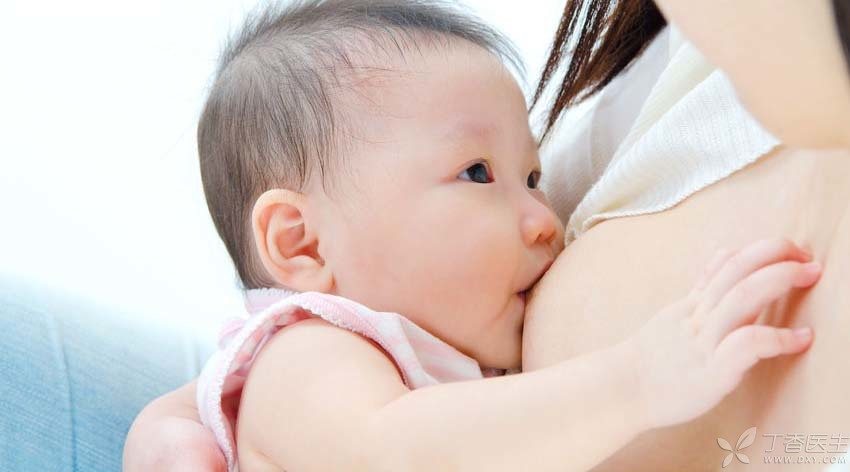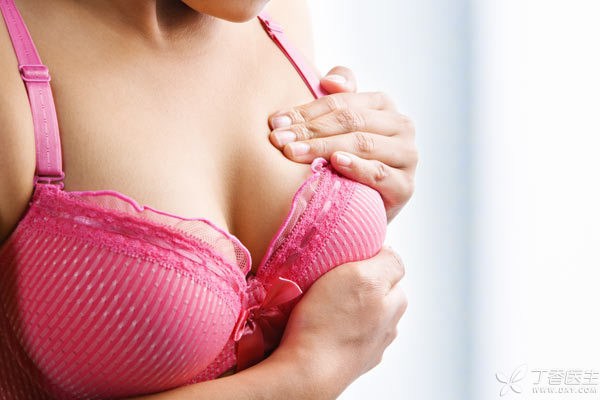Very not easy to break the milk, only to find that their breasts are not as beautiful as they were then, drooping like two heavy pears.
This sentence may have expressed the small loss in many mothers’ hearts.
After weaning, many mothers find their breasts drooping and weak, which is no longer the past. Many mothers will think that this is somewhat related to breast feeding.
However, is breast sagging really caused by breast feeding? Is there any method of recovery and prevention? Today, we invited Tian Jishun, the medical director of Dr. Clove, to give us a popular science on whether breast feeding has anything to do with chest sagging.
Can breast-feeding cause milk to prevent sagging? No basis!

Although there is a lot of publicity about the benefits of breastfeeding, the current general breastfeeding rate is not satisfactory.
For example, the exclusive breastfeeding rate within 6 months in China is less than 30%. According to a 2003 survey in the United States, the breastfeeding rate was only 32.8% within 6 months, and this rate has lasted for 20 years.
Since breastfeeding has so many benefits, why is the actual breastfeeding situation so unsatisfactory?
It’s not that people don’t know the benefits of breastfeeding, More, it is because they cannot bear the [pain] of breast-feeding. According to the survey, the first reason why the parturient gives up breast-feeding prematurely within 6 months is because of various discomfort such as pain during breast-feeding, and the second reason is because they are worried that breast-feeding will affect the appearance and beauty of the breast in the future, especially the sagging breast.
In fact, most of the discomfort during breast-feeding is related to the incorrect posture of breast-feeding. Usually, the ideal solution can be obtained by teaching correct breast-feeding and carrying out some symptomatic treatment. As for the problem of breast sagging, it is a terrible scene that will only appear after a long time. This [fear of the unknown] is not so easy to solve.
For example, when you go to a famous search website to search for [breast sagging], in addition to regularly searching for various small advertisements, there is such content in a certain encyclopedia associated with it:

There is no basis for saying that there is a nose and eyes.
What causes breast prolapse?

It doesn’t mean much to say too much about the medical definition of breast prolapse. After all, even if your doctor says [this is not breast prolapse in medicine], people will feel that they have drooped. Why is it not drooping? Do you have to hang to your knees to admit it?
Therefore, let’s not pull these useless definitions, let’s say the cause of breast prolapse.
There have been some studies in this area since the 1970s. At present, recognized risk factors include hormone withdrawal (such as menopause), old age, large weight loss (over 20 kg), obesity, smoking, too large a cup, and multiple pregnancies and childbirth.
But this does not include lactation.
Many of these factors are well understood, for example, people with large cups tend to droop their breasts.
Some studies said that breast weight more than 400 g, more likely to sagging-after all, too heavy can’t hold. Another is old or greatly lose weight, skin flabby, breast sagging. In addition, smoking (here refers to smoking for more than one year) will make the elasticity of skin connective tissue drop, thus causing breast sagging.
However, there is another factor here-multiple pregnancies, doesn’t it mean breast feeding will cause breast prolapse?
Pregnancy and lactation are still two different things.
In order to find out whether pregnancy or lactation causes breast prolapse, some studies have divided people with different times of childbirth and different times and times of lactation into groups.
The results showed that the more children women had, the greater the probability of breast prolapse. However, there is no difference between what and breast prolapse regardless of whether breast is breast-fed or not and the length of breast-feeding time.
The reason for breast prolapse caused by pregnancy is that the change of hormone level during pregnancy makes the breast filling larger, and then the withdrawal of hormone after delivery causes breast prolapse, which has nothing to do with whether breast is fed or not.
The more pregnancies and births, the greater the impact.
In other words, breast changes have already taken place during pregnancy.
Since the decision to conceive and give birth to a child is equivalent to being ready to sacrifice the beauty of the breast. As for whether to breast-feed after delivery, the influence of what will no longer be increased.
Therefore, since you have chosen to give birth, even if you do not breast-feed after delivery, it will not change the impact of pregnancy on the appearance of the breast.
Does breastfeeding affect the appearance of breasts?
So does breastfeeding have no effect on breast shape? There are some.
There is a Twinsburg in Ohio, USA, which holds the Twins Festival every year. Therefore, doctors went to this festival to recruit twins for some medical research, including research on breast shape.
Results the study found that the breast that had been breast-fed decreased in the size and appearance of the areola, but was better in the skin quality of the breast. Generally speaking, the breast that had been breast-fed was about 0.07 years younger than the breast that had not been breast-fed, about 25 or 6 days younger.
Almost, if 40 weeks of pregnancy makes your breasts 280 days old, then if you breastfeed after giving birth, it is equivalent to a 10% discount on this aging.
In this way, if we consider the appearance of the breast, it is actually cost-effective to breast-feed after giving birth.
As for wearing bras to prevent sagging, there is no basis. Bras can support breasts when worn, but they cannot change the nature of sagging.
In addition, upper limb training cannot prevent or change breast prolapse either. Because the breast is only attached to muscles, and there is no muscle tissue in the breast.
It is like a pear hanging on the treetops. No matter how thick the treetops are, the pears will still hang down. However, if you have the habit of exercising, at least you will not be overweight, which can reduce the risk of breast sagging.
Therefore, if you want to prevent breast prolapse, you should start with the real reasons mentioned above, such as not smoking, controlling your weight through diet control and proper exercise, and not being overweight. Of course, you can also choose not to give birth or only give birth once.
